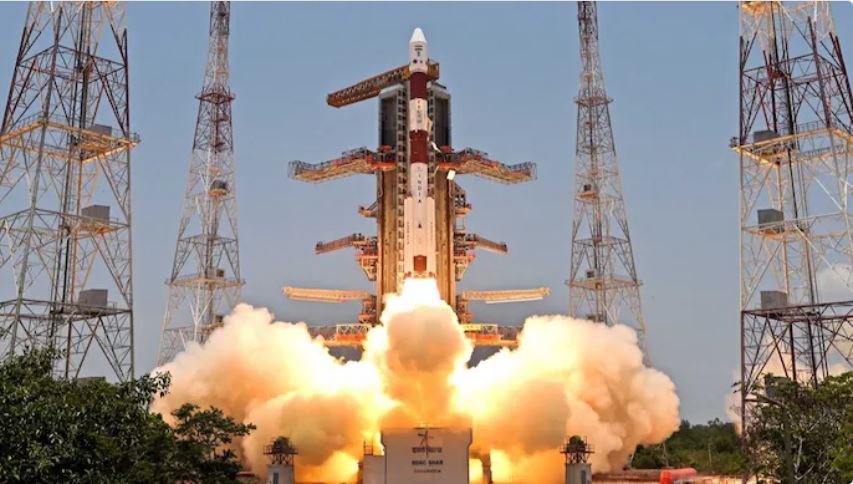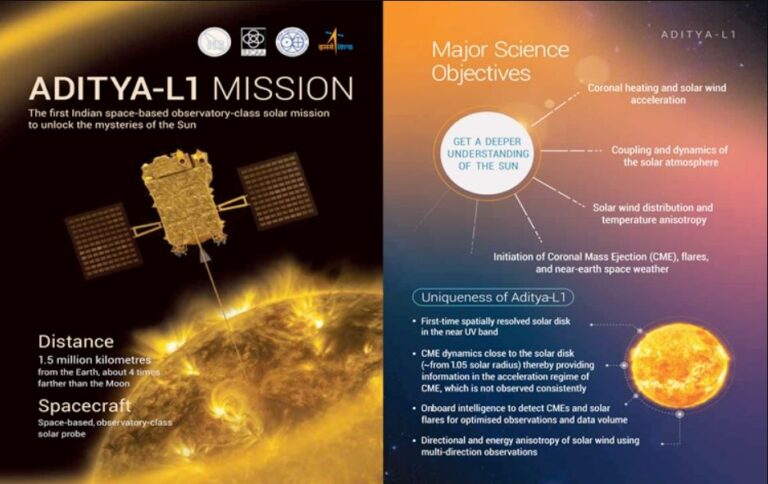Aditya L1 launched Successfully

Following the success of Chandrayaan 3, the Indian Space Research Organisation (ISRO) successfully launched Aditya L1 from Sriharikota on 2nd September 2023. Aditya L1 is ISRO’s first solar observatory mission to study the Sun and unravel some of its long-standing mysteries.
The Launch
The launch of Aditya L1 took place at 11:50 am IST from the Satish Dhawan Space Centre in Sriharikota, Andhra Pradesh. Notably, the spacecraft separated from the fourth stage of the rocket nearly an hour after launch, marking one of the longest missions of the Polar Satellite Launch Vehicle (PSLV).
Scientific Instruments on Aditya L1
Aditya L1 comprises seven scientific instruments specially designed to investigate various aspects of the Sun’s behavior. These instruments include the Visible Emission Line Coronagraph (VELC), Solar Ultraviolet Imaging Telescope (SUIT), Aditya Solar Wind particle Experiment (ASPEX), and a Plasma Analyser Package for Aditya (PAPA).
Unraveling the Solar Corona Mystery
One of the primary objectives of the Aditya L1 mission is to demystify the Sun’s corona, an outer layer significantly hotter than the Sun’s surface. Scientists aim to closely examine the corona’s behavior to understand the mechanisms responsible for its high temperature.
Forecasting Space Weather Events
The mission also seeks to provide insights into the processes leading to solar flares, coronal mass ejections (CMEs), and solar energetic particle (SEP) events. Understanding these phenomena is crucial for more accurate forecasting of space weather events, which can impact communication systems, satellites, and power grids on Earth.
Impact on Earth’s Climate
Aditya L1’s observations of near-UV solar radiation and its influence on Earth’s upper atmosphere contribute to understanding how solar variability might affect Earth’s climate patterns over long timescales.
A Giant Leap for India’s Space Exploration
The successful launch of Aditya L1 represents a remarkable stride in India’s space exploration endeavors. This mission holds the promise of groundbreaking discoveries and insights in the field of solar and heliophysics. It will significantly enhance our understanding of the Sun’s behavior and its intricate interactions with Earth and the space environment.
What is L1?
Lagrangian points are positions in space where the gravitational forces of two large bodies, such as the Earth and the Sun, produce enhanced regions of attraction and repulsion. There are five Lagrangian points (L1 to L5). These points were discovered by the French mathematician Joseph-Louis Lagrange in 1772.
Lagrangian Point 1 or L1 is one of five Lagrangian points in the Earth-Sun system. It is located between the Earth and the Sun, specifically on the line defined by the two bodies. The position of L1 is about 1.5 million kilometers (about 930,000 miles) from Earth, directly facing the Sun. At this point, the gravitational forces of the Earth and the Sun balance in such a way that an object, such as a satellite or spacecraft, can essentially “hover” relative to the Earth’s position in its orbit around the Sun.
Why L1?
The choice of L1 for the Aditya L1 mission is significant. Unlike L2 and L3, which are unstable, L1 offers an uninterrupted view of the Sun, making it an ideal location for solar observation. The L4 and L5 points are stable, but do not provide the same advantageous view of the Sun.
This strategic location allows any satellite or observatory situated there to remain stationary relative to both the Sun and Earth, minimizing fuel consumption and offering a consistent and unobstructed view of our star.
Strategic Trajectory to L1
Aditya L1’s journey to L1 is meticulously planned. PSLV will carry Aditya L1 on a 125 days voyage to the Sun. After being placed in a Low Earth Orbit, the spacecraft’s orbit will be made more elliptical using its onboard propulsion system. It will then be launched towards L1. This trajectory ensures minimal fuel consumption, optimizing the mission’s success.
Way Forward
This mission stands as another feather in the cap for ISRO, following their successful Chandrayaan-3 moon landing. As we await its findings, one thing is clear: Aditya L1 is a leap towards a brighter future in understanding our Sun.






